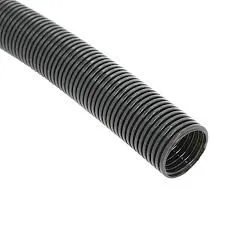Automated Conveyor Systems for Efficient Machine Chip Transport Solutions
The Role of Machine Chip Conveyors in Modern Manufacturing
In the dynamic landscape of modern manufacturing, the efficiency and effectiveness of production processes hinge significantly on the seamless movement of materials. One of the pivotal components that facilitate this movement is the machine chip conveyor. These specialized conveyors are designed specifically for handling scrap and chips produced during machining operations, playing a crucial role in optimizing workflows and ensuring a clean production environment.
Understanding Machine Chip Conveyors
Machine chip conveyors are engineered to transport metal chips and swarf generated as a byproduct of machining processes, such as cutting, milling, and grinding. These chips can be small, sharp, and abrasive, which presents unique challenges in terms of transportation and disposal. Traditional conveyor systems often fail to handle this type of material effectively, leading to blockages and equipment malfunctions. Therefore, manufacturers are increasingly turning to dedicated chip conveyors that are tailor-made for the task.
Types of Machine Chip Conveyors
There are several types of machine chip conveyors, each designed to cater to specific needs
1. Belt Conveyors These are the most common type and are suitable for a wide range of chip sizes and shapes. They use a continuous belt to carry chips from machines to storage or recycling areas. While versatile, they may require additional cleaning due to the accumulation of fluids and debris.
2. Slat Conveyors Utilizing interlocking metal slats, these systems offer robust and durable transportation for heavier chips and parts. They are less prone to wear and tear compared to rubber belts and are easier to clean.
3. Magnetic Conveyors Ideal for ferrous materials, magnetic conveyors use magnets to lift and carry metal chips along the conveyor path. This type of conveyor eliminates the challenges of chip spillage and is highly effective in environments where metal parts are frequently handled.
4. Auger Conveyors These conveyor systems use a rotating helical screw to move materials. Auger conveyors are particularly effective for transporting smaller chips and are often employed in situations where space is limited or where vertical transportation is required.
machine chip conveyor

Benefits of Machine Chip Conveyors
The integration of machine chip conveyors in manufacturing settings offers numerous benefits
1. Efficiency By automating the chip removal process, these conveyors minimize downtime and streamline operations. This efficiency allows manufacturers to maintain higher levels of productivity.
2. Enhanced Safety Traditional methods of chip disposal can pose safety hazards for workers. By utilizing machine chip conveyors, the risk of injuries caused by sharp metal fragments is significantly reduced.
3. Improved Cleanliness A clean work environment is essential for both safety and operational efficiency. Chip conveyors effectively remove debris from the production area, minimizing the need for manual cleanup and enhancing overall cleanliness.
4. Cost Savings Automating chip management not only reduces labor costs but also prevents potential equipment damage caused by chip accumulation, ultimately saving money on repairs and maintenance.
5. Recycling and Sustainability Most chip conveyors are designed to facilitate the recycling of metal. By efficiently transporting chips to recycling stations, manufacturers can reclaim valuable materials, contributing to sustainability efforts and reducing waste.
Conclusion
As industries continue to seek ways to optimize production efficiency and enhance workplace safety, machine chip conveyors have emerged as a vital component of modern manufacturing systems. These conveyors not only improve the handling of metal chips but also offer long-term economic and environmental benefits. The versatility and reliability of machine chip conveyors position them as a must-have for facilities focused on maximizing productivity while maintaining a commitment to safety and sustainability. As technology evolves, we can expect further innovations in conveyor design, keeping pace with the ever-changing needs of the manufacturing sector.








